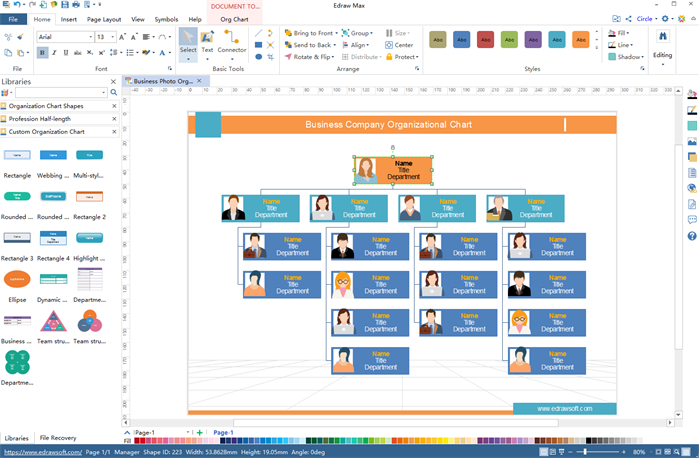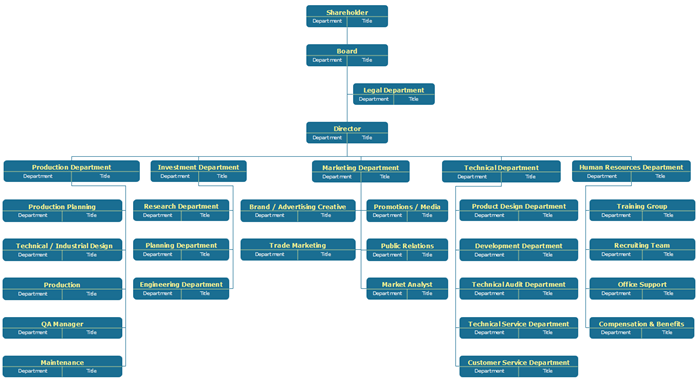Why We Need Different Types of Organizational Structure?
There may many answers to the question of how to successfully promote a brand, but effective types of organizational structure are the very basic determinants of such successes. A company with a well-structured framework would have a higher level of clarity and focus in terms of leadership, teamwork, and authority.
Most Essential Types of Organizational Structure
In reality, every business organization from a startup to the international enterprise has a specific organizational structure, but all of such types of organizational structure can be summarized as the following main formal categories. Each of them has both benefits and drawbacks, and may only work at sometimes depending on your company goals, organizational culture, salary structure and so on.
Functional
This type is also known as the bureaucratic organizational structure, which is mainly based on the specialty such as sales, finance, marketing teams and more. Each division has a manager or leader who oversees the overall department.
Advantages:
- Individual employees have clear job duties so would be easy to work as a whole team;
- Allows for more autonomy and flexibility within the company so each department can control their own resources and manage the budget for team projects.
Disadvantages:
- Require strong communication skills between employees and different divisions, especially when there exists more than one production line or target markets.
Divisional
Among different types of organizational strucutres, the divisional type is depended on different products, markets or locations. Some real-life examples include enterprises in the environmental industry.
Product-Based
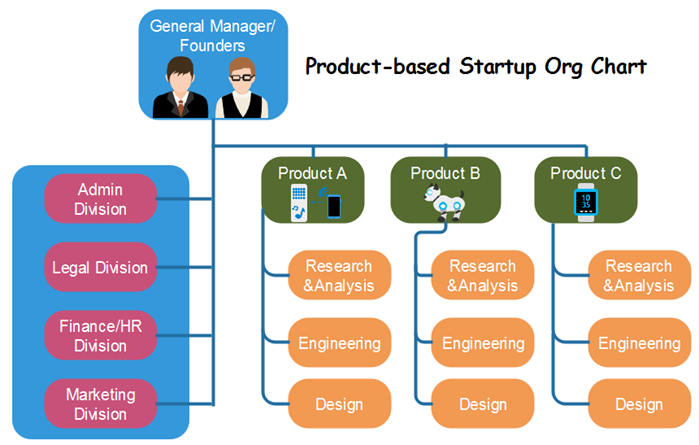
- Has multiple and even smaller functional frameworks, and each department works on one specific product or project;
- Ideal for firms with multiple product lines to speed up product life cycles;
- May not easy to distribute resources between different product teams.
Market-Based
- Ideal for companies with specific market segments of their products or services;
- Difficult to share and use resources between departments.
Location-Based
- Ideal for international organizations to develop overseas logistic channels;
- May not easy for managers to communicate with workmates due to long distance.
Matrix
In a matrix organizational chart, employees have several reporting lines, which can be functional lines, or product/service-based lines. Similar to the divisional and functional types of organizational structure, the matrix also has weakpoints and benefits.
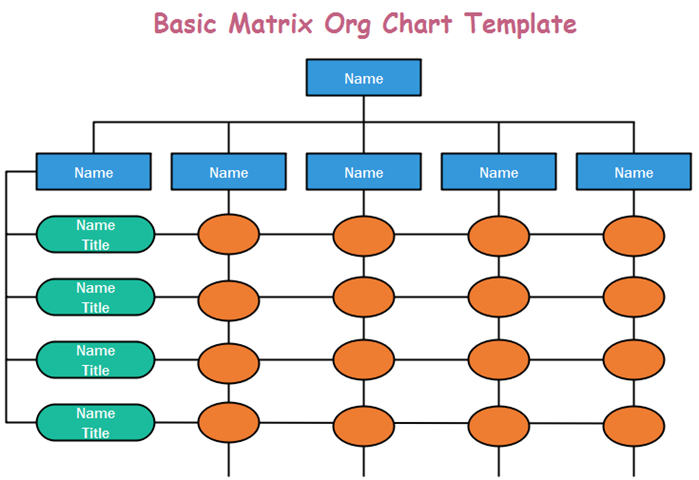
Advantages:
- Great flexibility and learning opportunities for employees from different departments to share and improve professional skills.
Disadvantages:
- May bring much complexity and confusions, especially when employees have unclear duties.
Flatarchy
Such type is popular in small businesses with only a limited number of management levels needed. Again, the flat org chart type has both advantages and disadvantages just like the other types of organizational structure. Flat organizational frameworks may lead to more innovative and creative decision-making processes, but meanwhile could be time-consuming when disagreements occurred. Therefore, it seems like the flat type may not suitable for departments with lots of leadership sprint employees.
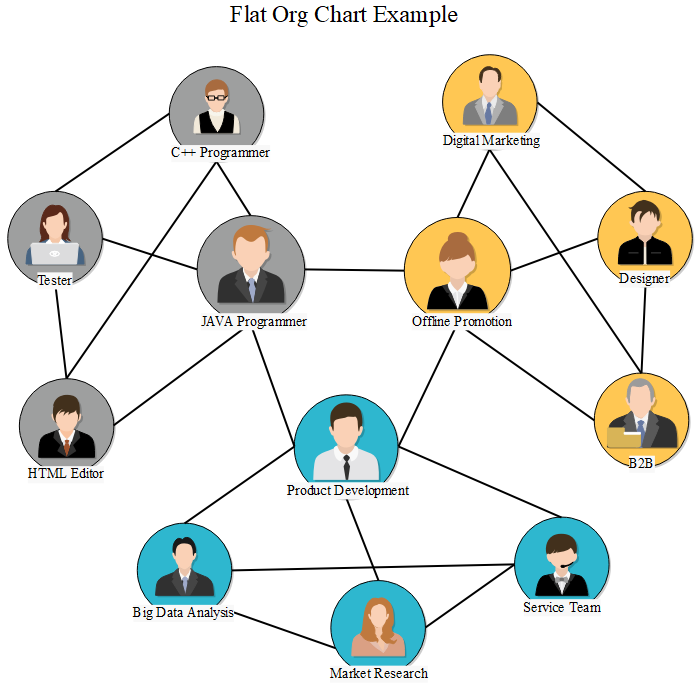
Create Your Own Types of Organizational Structure Charts
Feel free to have a try right away by free downloading this easy org chart creator.
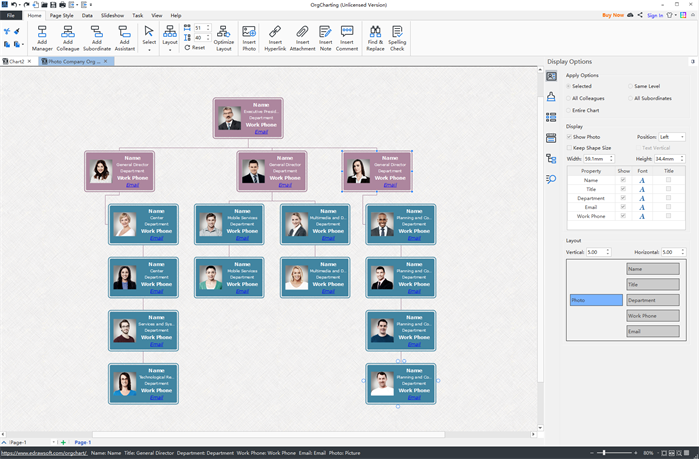
Alternatively, if you wanna try more creative styles of org charts, just click this org chart creator for more info.
